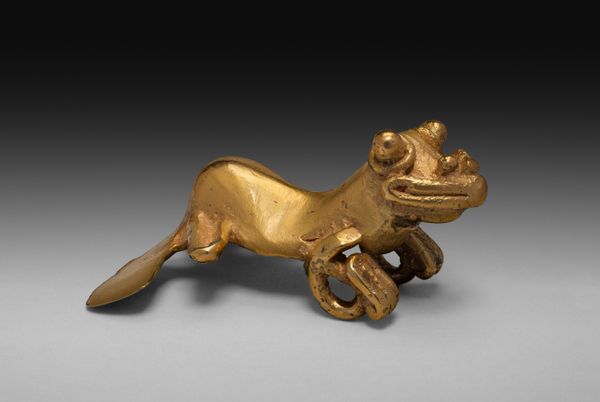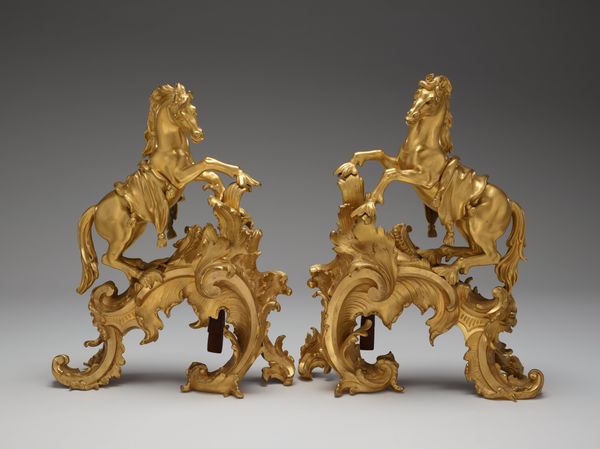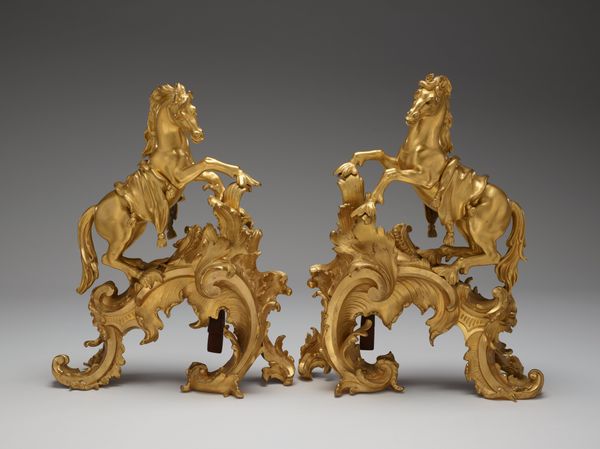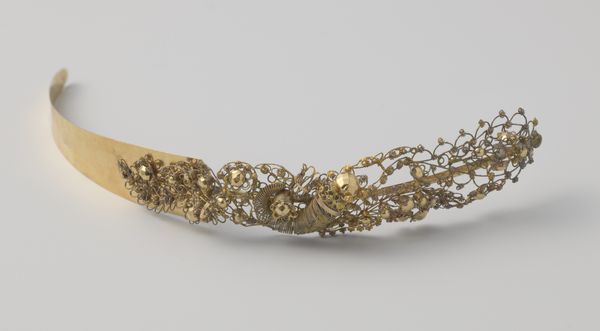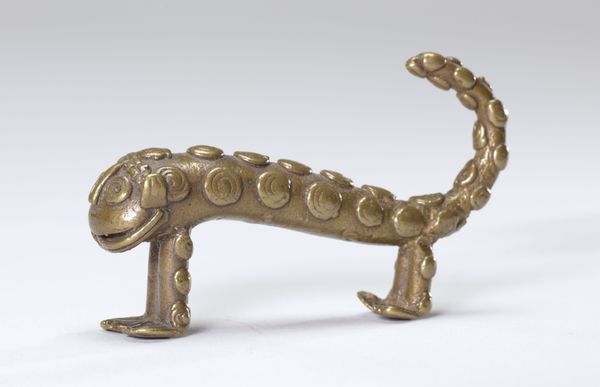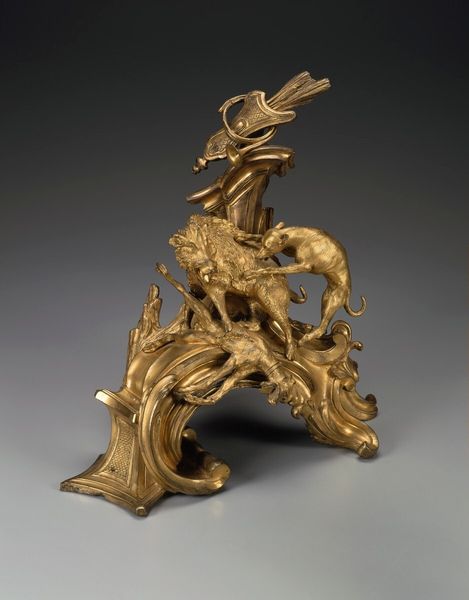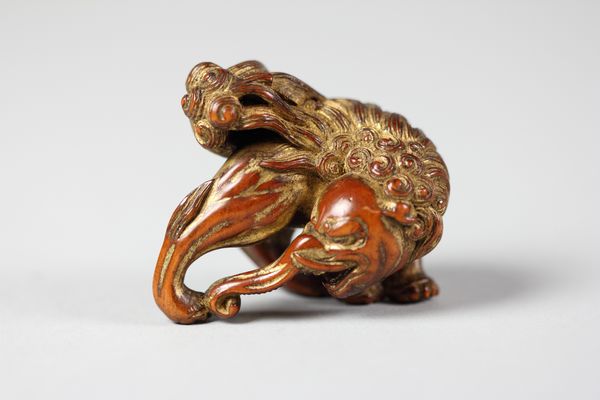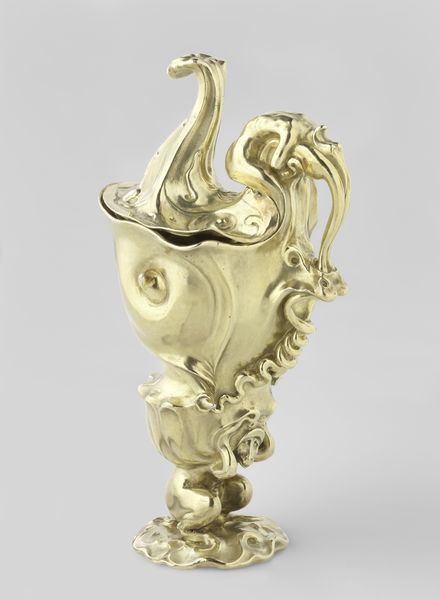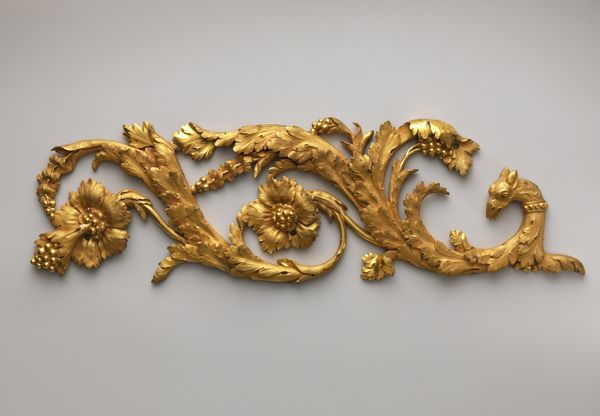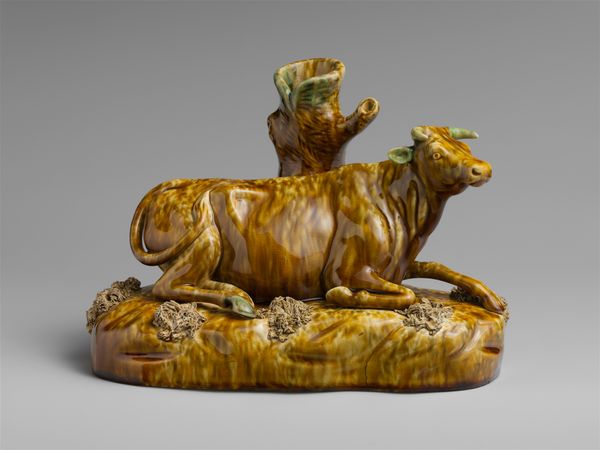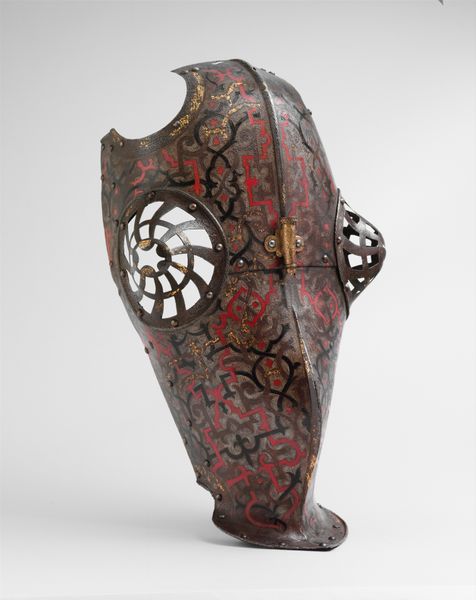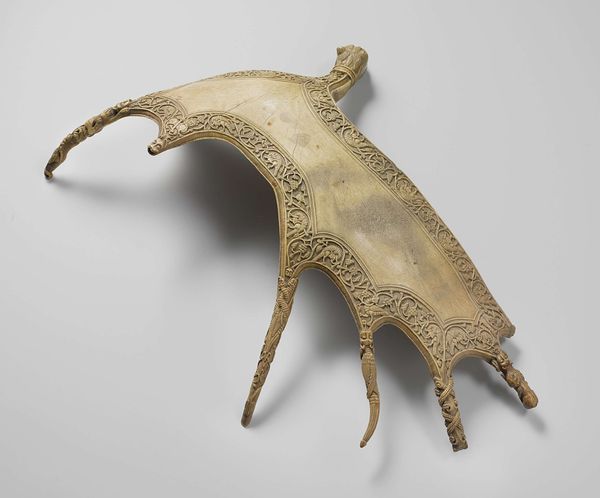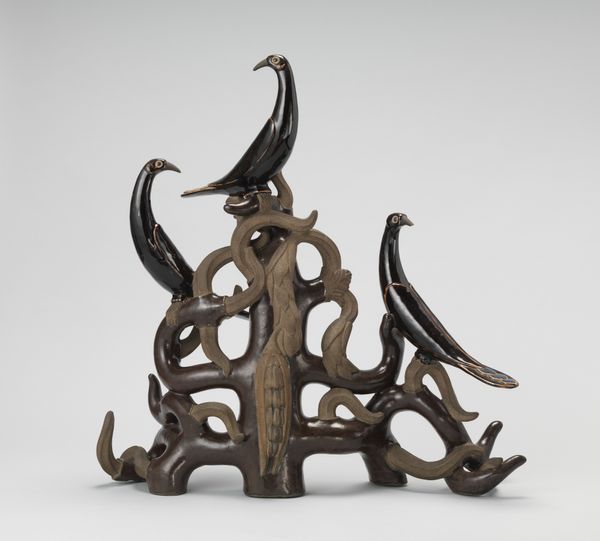
Filagree Pendant in the Form of a Frog or Toad Possibly 500 - 1000
0:00
0:00
metal, gold
#
metal
#
gold
#
indigenous-americas
Dimensions: L. 18.26 cm (7 3/16 in.)
Copyright: Public Domain
Editor: Here we have a truly unique piece: a filigree pendant in the form of a frog or toad, crafted from gold, dating possibly from 500 to 1000 AD, by the Coclé culture. What strikes me immediately is how delicate yet monumental it feels. It’s like the artist captured a grand spirit in miniature. What do you see in this piece, professor? Curator: Indeed, the interplay of delicacy and solidity is paramount here. Consider the linear quality achieved through the filigree technique. Each gold strand, meticulously placed, contributes to a network of formal relations. Note the strategic deployment of spiraling motifs against the rectilinear framework defining the amphibian’s body. This tension animates the whole, drawing the eye across its surfaces. It appears both abstract and naturalistic, simultaneously. Observe how this strategic pattern, this very controlled chaos, enhances the overall dynamism of the work. Editor: I’m particularly drawn to how light filters through the latticework. Does the negative space have any meaning in relation to the solid gold? Curator: Excellent question. The manipulation of positive and negative space serves to dematerialize the subject. It isn’t merely a frog, but a symbolic construction *of* a frog. It alludes to a primal archetype via the conscious arrangement of lines and voids, thereby challenging our preconceived notions of material presence and absence. Does the base of the pendant present other intriguing features, as well? Editor: Absolutely, I also wonder about the circles dangling at each leg... the repetitive shapes almost appear musical. It seems as though the artist may have taken special care in the adornment and details of this amphibian! Curator: Precisely. Form, in its purest manifestation, often possesses an inherent musicality, a rhythm born from the conscious ordering of elements. Studying its architecture invites a profound reflection on our visual habits. I would offer that it stands to suggest that what truly defines "art" lies not in its overt subject, but within the aesthetic and technical skill involved in representing its composition. Editor: This has helped me understand how even a seemingly simple piece of jewelry can be read as a complex arrangement of formal relationships. Curator: Exactly. Now, equipped with such insight, one appreciates more about artistic intention of even the oldest jewelry artifacts.
Comments
No comments
Be the first to comment and join the conversation on the ultimate creative platform.

